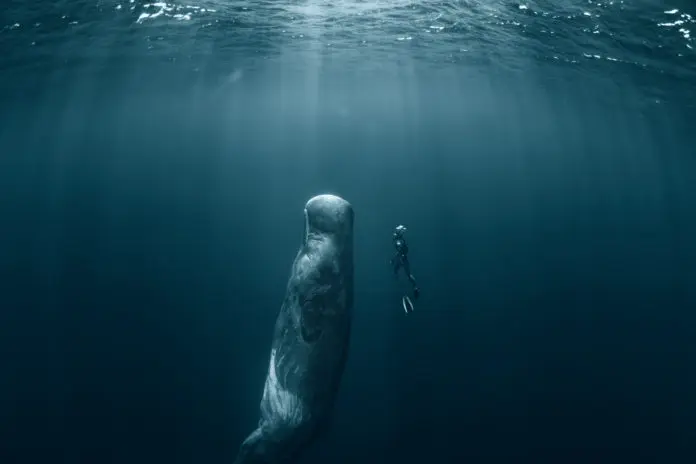Marine animal encounters are amazing experiences for those that love the sea. Surprisingly, you don’t have to be a scuba diver to meet the ocean’s creatures. In this article, we take a look at seven bucket list animals that are best encountered either at the surface or a few meters under it. Whether you’re a non-diver looking to join your diving friends on their next adventure or an accomplished freediver who prefers the simplicity of breath-hold diving, this list is designed with you in mind.
Whale Sharks: Isla Mujeres, Mexico
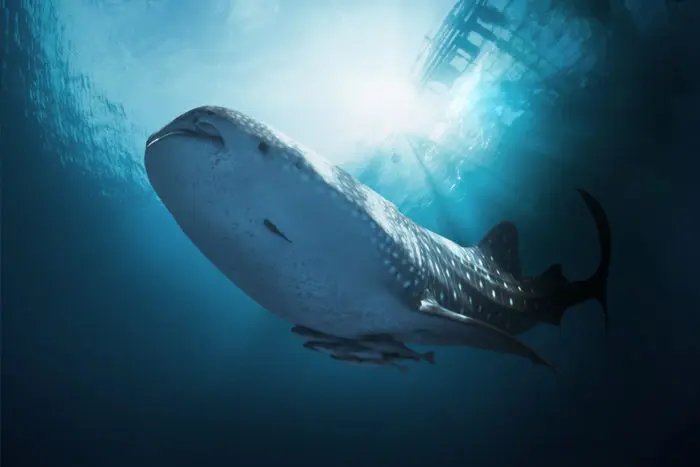
Every year between May and September, the Yucatan island of Isla Mujeres hosts an incredible natural phenomenon. The seasonal spawning of the little tunny results in a slick of fish eggs that proves irresistible to the region’s surface-feeding whale sharks. These ocean behemoths gather in their hundreds to feed on the sudden bounty of food. In 2009, a research aircraft recorded a staggering 420 sharks on a single flight over the Isla Mujeres area – making this the greatest aggregation of whale sharks on Earth. Several operators offer dedicated whale shark encounters, giving you the chance to snorkel with as many as 50 sharks on a single trip.
Oceanic Whitetips: Cat Island, Bahamas
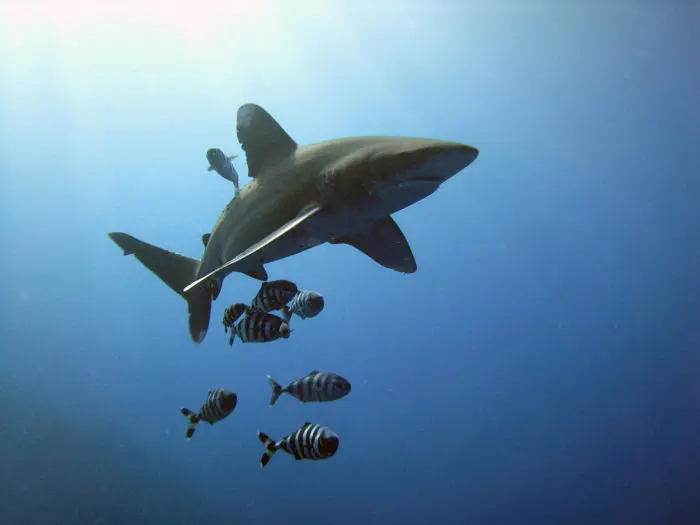
One of The Bahamas’ remote Out Islands, Cat Island is renowned for its seasonal oceanic whitetip sightings. Between April and May, these iconic pelagic predators are attracted to the sudden drop-off on the island’s Atlantic side by an influx of migrating tuna. Operators like Big Fish Expeditions run extended trips to see the oceanic whitetips, which can be encountered on scuba or snorkel. Conditions in The Bahamas are spectacular, with clean, warm waters making this the ideal destination for underwater photographers. Other pelagic species are frequently encountered on the trips, including silky sharks, dusky sharks, and the magnificent blue marlin.
Spinner Dolphins: Marsa Alam, Egypt
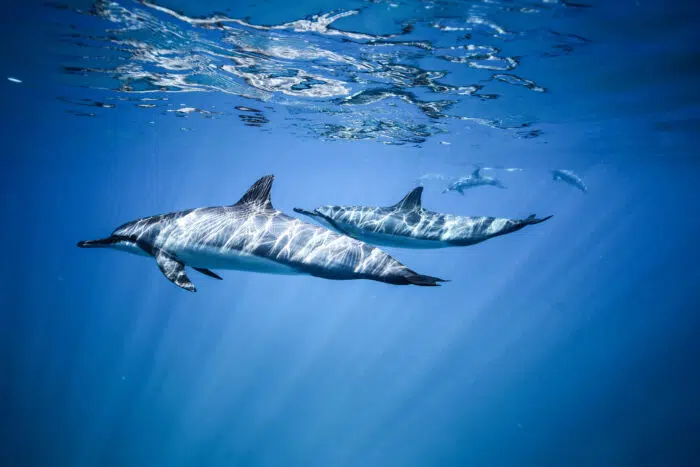
Snorkelers can get in on the Red Sea’s famous wildlife action near the southern resort town of Marsa Alam – thanks to a special offshore reef known as Dolphin House. Here, a natural lagoon creates a sheltered resting place for a pod of wild spinner dolphins. The water is shallow, the visibility is excellent and the current is almost non-existent – making this the ideal encounter for new or nervous snorkelers. Sightings are not guaranteed (after all, the dolphins are free to come and go as they please), but success rates are high and the thrill of interacting with these charismatic creatures in their own environment is unforgettable.
Manatees: Crystal River, Florida
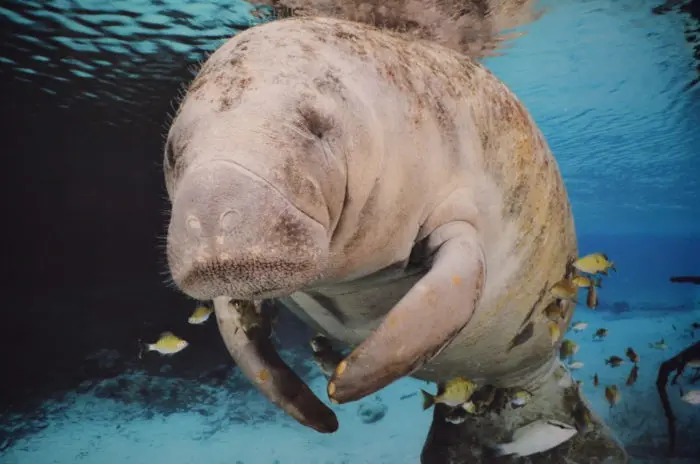
Legend has it that rum-soaked sailors used to mistake manatees for mermaids – a theory that seems slightly far-fetched considering their whiskered, wrinkly gray faces. The best place to see these portly vegetarians is Florida’s Crystal River. The river connects the hot springs of Kings Bay with the Gulf of Mexico and maintains an average water temperature of 22ºC/ 72ºF all year round. In winter, sea temperatures in the Gulf of Mexico drop dramatically, forcing the manatees to crowd into Crystal River in search of warmth. Operators like River Ventures offer swimming tours to see them, although all interactions must be initiated by the manatees – not the other way around.
Orcas: Tysfjord, Norway
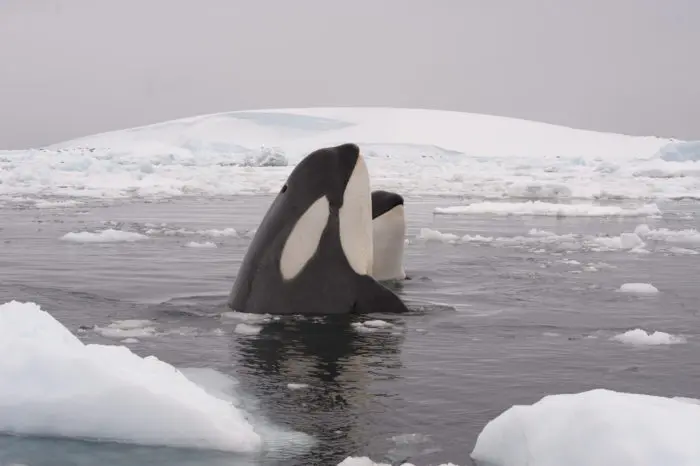
Those that aren’t afraid of the cold should book a trip to Norway’s rugged fjord lands. Here, the Tysfjord Turistsenter runs trips every winter to look for and swim with the mighty orca. The whales used to follow the annual herring migration into Tysfjord itself, but in recent years the shoals have remained further north. Now, safaris are preceded with a 90 mile/ 150-kilometer drive north to the best area for spotting the world’s greatest marine predator. You’ll be given a drysuit as protection against the freezing water temperatures, but once the whales have been spotted, you’ll soon forget the cold. The water is clear but dark, and the orcas are like ghosts beneath your fins.
Humpback Whales: Vava’u Islands, Tonga
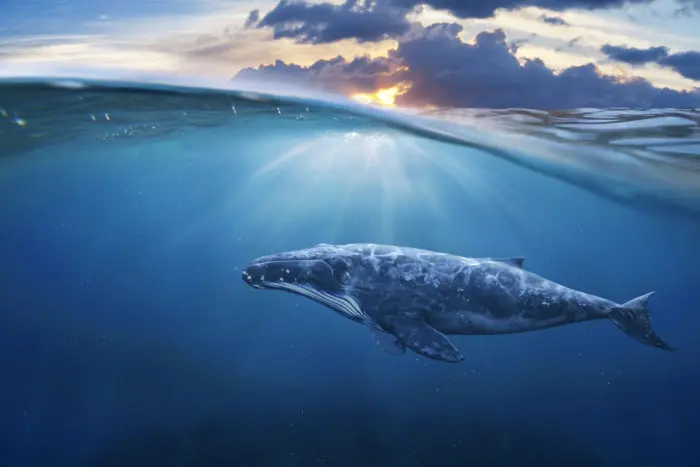
The humpback whale is the acrobat of the sea – often breaching clear of the water or playfully slapping its pectoral fins on the surface. There are several places to swim with them in the wild, but Tonga’s Vava’u Islands is probably the best. From July to October, humpbacks flock to the islands’ protected waters to give birth to their young. It is the final stage in an incredible journey from the frigid feeding grounds of the Southern Ocean. Although some of the female whales are escorted by male humpbacks, most of the encounters are with mothers and calves in the sapphire waters of the South Pacific. Make sure to only use licensed operators.
California Sea Lions: Los Islotes, Mexico
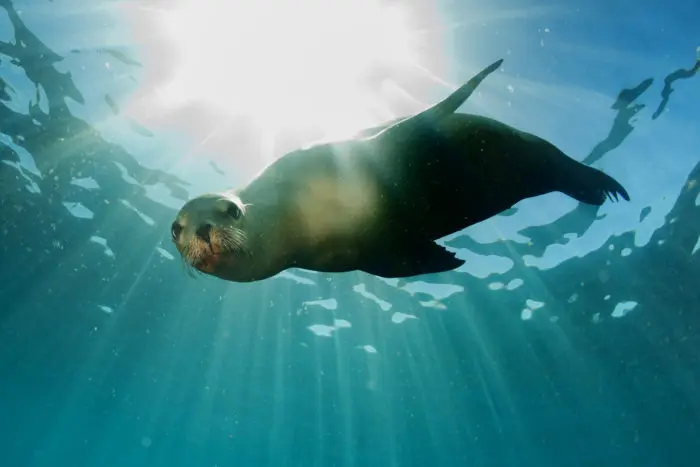
A short boat ride from La Paz in southern Baja California lie the twin islets known as Los Islotes. The islets are home to hundreds of California sea lions – infinitely playful creatures distinguished from your average seal by their comical external ears. Several operators run boat trips out to Los Islotes, where you can swim with the sea lions in clear waters. It’s best not to approach the rocky shore, as this is the domain of territorial bulls and their harems. The water is always alive with playful youngsters though, who amuse themselves by swimming up to snorkelers at warp speed, blowing bubbles and corkscrewing away again.

